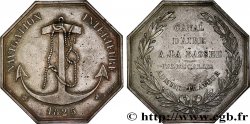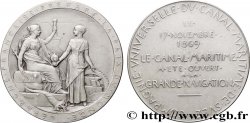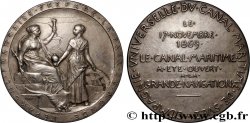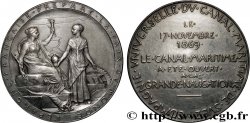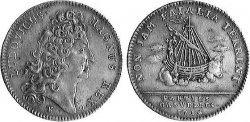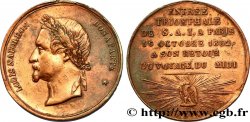E-auction 233-157311 - fjt_387150 - KANÄLE UND WASSERSTRASSENVERKEHR Assainissement du canal du Forez 1859
Sie müssen angeschlossen sein und von cgb.fr genehmigt werden, um in einer E-Auktion teilzunehmen.Melden Sie sich an, um zu wetten..Die Kontobestätigungen sind innerhalb von 48 Stunden nach Ihrer Anmeldung gemacht.Warten Sie nicht bis die letzten zwei Tage vor dem Abschluss eines Verkaufs, um Ihre Registrierung abzuschließen. Klickend "BIETEN" verpflichten Sie sich vertraglich, diesen Artikel zu kaufen und Sie nehmen ohne Reserve die allgemeinen Verkaufsbedingungen für den e-auctions zu cgb.fr an.
Der Verkauf wird an der Zeit auf der Übersichtsseite angezeigt geschlossen werden. Angebote, die nach der Schließung Zeit empfangen sind, werden nicht gültig.
Bitte beachten Sie, dass die Fristen für die Einreichung Ihres Angebots auf unsere Server können variieren und es kann zur Ablehnung Ihres Angebots entstehen, wenn es in den letzten Sekunden des Verkaufs gesendet wird. Die Angebote sollen mit ganzer Zahl ausgeführt sein, Sie können Kommas oder des Punktes in Ihrem Angebot nicht erfassen. Bei Fragen klicken Sie hier, um einen Blick auf die FAQ E-Auktionen.
KEINE ANSCHAFFUNGSKOSTEN FÜR DIE KÄUFER.
KEINE ANSCHAFFUNGSKOSTEN FÜR DIE KÄUFER.
| Schätzung : | 90 € |
| Preis : | 52 € |
| Höchstgebot : | 52 € |
| Verkaufsende : | 02 Oktober 2017 18:24:00 |
| Bieter : | 7 Bieter |
Type : Assainissement du canal du Forez
Datum: 1859
Name der Münzstätte / Stadt : LOIRE
Metall : Silber
Durchmesser : 50 mm
Stempelstellung : 12 h.
Gewicht : 13,20 g.
Rand lisse
Punze : abeille ARGENT
Seltenheitsgrad : R1
Vorderseite
Titulatur der Vorderseite NAPOLEON III - EMPEREUR.
Beschreibung Vorderseite Buste de Napoléon III à gauche, signature OUDINE.
Rückseite
Titulatur der Rückseite ASSAINISSEMENT DU FOREZ - LOIRE.
Beschreibung Rückseite En trois lignes et dans un couronne de feuilles de Chêne et d’Olivier : DÉCRET / DU 7 DÉCEMBRE / 1859.
Kommentare
Le bassin du Forez, à l'état naturel, est à la fois propice aux marécages, et pauvre avec des sols peu profonds, sableux en surface, argileux en partie inférieure et dépourvus de pente d'écoulement. Le climat chaud et sec en été (effet de Foehn) y aggrave l'insalubrité, amenant de fréquentes récurrences de fièvre jaune et autres maladies de cause similaires. L'état sanitaire était en conséquence désastreux. D'autre part, les irrégularités de l'hydrographie locale faisaient souffrir les plantes, par manque d'eau en été et par excès d'eau en d'autres saisons. L'agriculture en pâtissait d'autant. Telle était la situation jusqu’au milieu du XIXe siècle. C'est alors que de grandes mesures d'assainissement sont mises en place, après plus de 30 ans de débats. C'est l'époque où Laguerenne, ingénieur en chef des Ponts et Chaussées, étudie de 1830 à 1842 un nouveau projet de canal reliant Roanne d'une part, et La Fouillouse (près de Saint-Étienne), Rive-de-Gier et le canal de Givors d'autre part. Le projet sera abandonné, mais le présent canal emprunte en partie le tracé prévu alors. Un autre élément intervient dans l'opportunité de cette prise de décision : le 18 septembre 1852, ce n'est pas Montbrison, la préfecture, que le futur Napoléon III visite lors de son voyage de préparation du coup d'état deux mois plus tard ; mais Saint-Étienne, fort agitée durant les récentes décennies. Signe des temps ; car Montbrison perd le statut de préfecture au profit de Saint-Étienne en 1855, avec une perte d'influence pour son bassin que les responsables de l'époque cherchent à compenser en lui octroyant une amélioration substantielle de ses ressources et de son environnement. Le décret de concession à perpétuité du Canal du Forez en faveur du Département de la Loire est signé en 18631. Sa construction a commencé en 1865 sous Napoléon III. Interrompu par la guerre de 1870, son tronçon principal a été achevé en 1914 et ses extensions en 1966. Le pont-canal au kilomètre 33,05 de la branche principale, qui permet le croisement du canal avec le Vizézy, a la particularité d'être surplombé par le pont de la voie ferrée
(Sources : https://fr.wikipedia.org/wiki/Canal_du_Forez).
The Forez basin, in its natural state, is both suitable for marshes and poor with shallow soils, sandy on the surface, clayey in the lower part and lacking any drainage slope.. The hot and dry climate in summer (Foehn effect) aggravates the insalubrity, leading to frequent recurrences of yellow fever and other diseases of similar causes.. The health situation was consequently disastrous.. On the other hand, the irregularities of the local hydrography made the plants suffer, due to lack of water in summer and excess water in other seasons.. Agriculture suffered all the more.. This was the situation until the middle of the 19th century.. This is when major sanitation measures were put in place, after more than 30 years of debate.. This was the time when Laguerenne, chief engineer of Bridges and Roads, studied from 1830 to 1842 a new canal project linking Roanne on the one hand, and La Fouillouse (near Saint-Étienne), Rive-de-Gier and the Givors canal on the other.. The project was abandoned, but the current canal partly follows the route planned at the time.. Another element plays a role in the timeliness of this decision: on September 18, 1852, it was not Montbrison, the prefecture, that the future Napoleon III visited during his trip preparing for the coup d'état two months later; but Saint-Étienne, which had been very unsettled in recent decades.. A sign of the times; because Montbrison lost its status as a prefecture to Saint-Étienne in 1855, with a loss of influence for its basin that the leaders of the time sought to compensate for by granting it a substantial improvement in its resources and its environment.. The decree granting the Canal du Forez in perpetuity to the Loire Department was signed in 18631. Its construction began in 1865 under Napoleon III. Interrupted by the war of 1870, its main section was completed in 1914 and its extensions in 1966. The canal bridge at kilometer 33.05 of the main branch, which allows the canal to cross with the Vizézy, has the particularity of being overlooked by the railway bridge (Sources: https://fr. Wikipedia. org/wiki/Canal_du_Forez)
(Sources : https://fr.wikipedia.org/wiki/Canal_du_Forez).
The Forez basin, in its natural state, is both suitable for marshes and poor with shallow soils, sandy on the surface, clayey in the lower part and lacking any drainage slope.. The hot and dry climate in summer (Foehn effect) aggravates the insalubrity, leading to frequent recurrences of yellow fever and other diseases of similar causes.. The health situation was consequently disastrous.. On the other hand, the irregularities of the local hydrography made the plants suffer, due to lack of water in summer and excess water in other seasons.. Agriculture suffered all the more.. This was the situation until the middle of the 19th century.. This is when major sanitation measures were put in place, after more than 30 years of debate.. This was the time when Laguerenne, chief engineer of Bridges and Roads, studied from 1830 to 1842 a new canal project linking Roanne on the one hand, and La Fouillouse (near Saint-Étienne), Rive-de-Gier and the Givors canal on the other.. The project was abandoned, but the current canal partly follows the route planned at the time.. Another element plays a role in the timeliness of this decision: on September 18, 1852, it was not Montbrison, the prefecture, that the future Napoleon III visited during his trip preparing for the coup d'état two months later; but Saint-Étienne, which had been very unsettled in recent decades.. A sign of the times; because Montbrison lost its status as a prefecture to Saint-Étienne in 1855, with a loss of influence for its basin that the leaders of the time sought to compensate for by granting it a substantial improvement in its resources and its environment.. The decree granting the Canal du Forez in perpetuity to the Loire Department was signed in 18631. Its construction began in 1865 under Napoleon III. Interrupted by the war of 1870, its main section was completed in 1914 and its extensions in 1966. The canal bridge at kilometer 33.05 of the main branch, which allows the canal to cross with the Vizézy, has the particularity of being overlooked by the railway bridge (Sources: https://fr. Wikipedia. org/wiki/Canal_du_Forez)







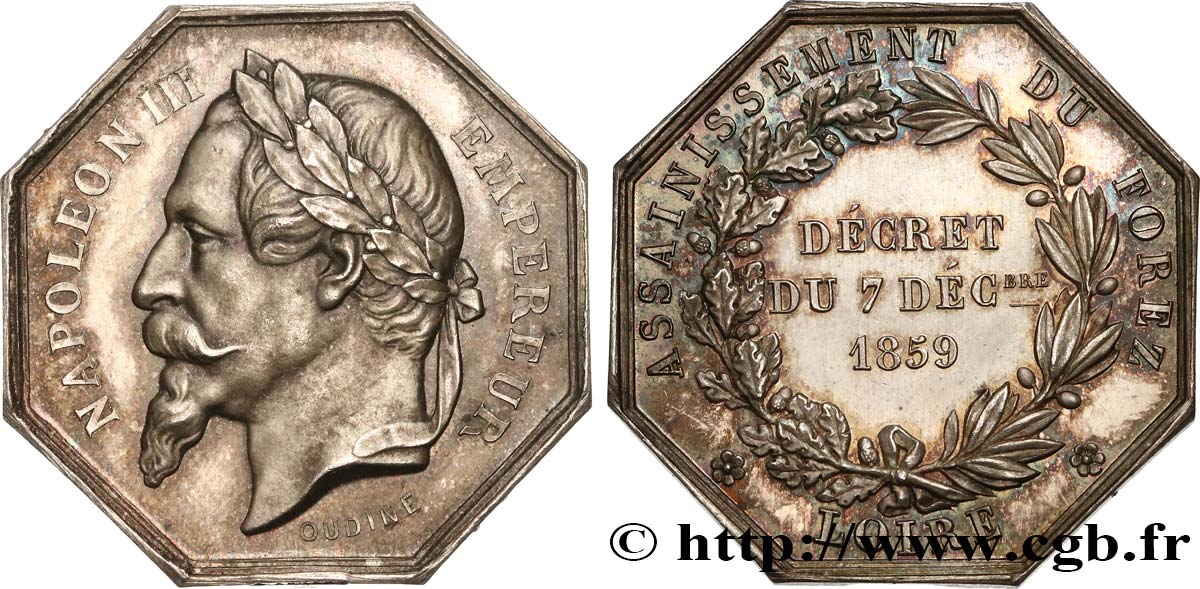
 Berichten über einen Fehler
Berichten über einen Fehler Die Seite drucken
Die Seite drucken Teilen meiner Auswahl
Teilen meiner Auswahl Stellen Sie eine Frage
Stellen Sie eine Frage Einlieferung/Verkauf
Einlieferung/Verkauf
 Details
Details